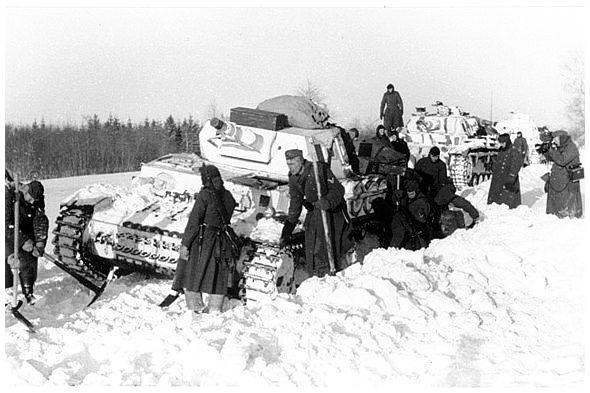BALLAD OF A SOLDIER
(In Russian with English Subtitles)
SUBJECTS — World/WWII & Russia;
SOCIAL-EMOTIONAL LEARNING — Courage in War;
MORAL-ETHICAL EMPHASIS — Trustworthiness.
AGE; Age: 10+; No MPAA Rating;
Drama; 1960, 89 minutes; B & W.
There is NO AI content on this website. All content on TeachWithMovies.org has been written by human beings.

(In Russian with English Subtitles)
SUBJECTS — World/WWII & Russia;
SOCIAL-EMOTIONAL LEARNING — Courage in War;
MORAL-ETHICAL EMPHASIS — Trustworthiness.
AGE; Age: 10+; No MPAA Rating;
Drama; 1960, 89 minutes; B & W.
A young Russian soldier disables two German tanks and is rewarded with a trip home to see his mother. This film is the story of that journey. “Ballad of a Soldier” is a classic WWII Soviet propaganda film produced by a country that was at the time an ally of the United States and Great Britain. The movie is one of the most honored and popular films of its time and genre.

Much of the Second World War was fought on Russian soil. By the Fall of 1941, the Germans had captured the Baltic nations, the Ukraine and most of European Russia. Usually when they occupied Russian territory the Germans found only burned villages and industrial plants that had been either removed beyond the Ural mountains or destroyed. But in the Baltic states, Byelorussia, and the Ukraine, many citizens who had been alienated by harsh Stalinist rule welcomed the invaders.
Millions of Soviet soldiers were captured after the German armies encircled them. Some were simply annihilated while others were sent to slave labor camps. There were 1,250,000 Russian military and civilian casualties from the siege of Leningrad alone.
The German invasion stalled in the winter of 1941. The advance on Leningrad was checked in September 1941, and the advance on Moscow was turned back a month later. However, the Germans did not give up easily. The Russians permanently gained the offensive only after the battle of Stalingrad which raged from August 1942 to January 1943.
The cost of the war to the Soviet Union was twenty million people killed, thirteen million military and seven million civilian. The United States, in comparison, suffered no civilian losses and about 400,000 military deaths in all of WWII. The entire British Empire and all of the Commonwealth nations suffered 452,000 military deaths and 60,000 civilian deaths in the war. Germany, despite its defeat, suffered less numerically than the Soviet Union with 3,500,000 military deaths and 3,800,000 civilian deaths. Note that because Germany had a smaller population than the Soviet Union the relative effect of the casualties on Germany is not reflected in this comparison.
In addition to the loss of life, the European portion of the Soviet Union, its most developed area, was devastated.
During the Second World War, the United States provided Russia with eleven billion dollars worth of food, weapons, and other materiel through the lend-lease program. The canned beef with which Alyosha bribed the sentry could very well have been supplied by the Americans.
What country suffered the worst losses in WWII and what were those losses?
Suggested Response:
The Soviet Union (Russia). See Helpful Background section.
1. See Discussion Questions for Use With any Film that is a Work of Fiction.
2. Why was it so important for Alyosha to get back to the front that he spent only a few moments with his mother? Why did he leave her so quickly?
3. This film is Soviet-era propaganda. How did this show up in the movie?
Discussion Questions Relating to Ethical Issues will facilitate the use of this film to teach ethical principles and critical viewing. Additional questions are set out below.
(Be honest; Don’t deceive, cheat or steal; Be reliable — do what you say you’ll do; Have the courage to do the right thing; Build a good reputation; Be loyal — stand by your family, friends, and country)
1. Does the message of this film take the concept of loyalty to country a little too far?
2. Did Alyosha do the right thing by lying to Pavlov’s father about how well Pavlov was doing in the Army and that Pavlov wanted to give him the gift of soap? Was the father right to send a false message concerning Pavlov’s wife? What use would it have been to tell Pavlov the truth? Is this what we mean when we use the term, “a white lie?”
3. This story shows an official taking a bribe. How does bribery, a serious problem in Russia and in many other countries, undermine the social order?